Sorry, this entry is only available in French.
Tourments d’amour, culinary specialty of Les Saintes
Guadeloupe gastronomy brings together many traditional dishes with beautiful Creole flavors that make you salivate. Among these dishes, Torments of Love ranks among the TOP 5 delicacies of the archipelago to be tasted without hesitation.
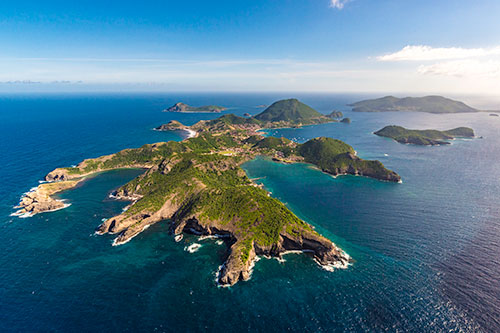
Specialty of the Antilles and mainly of Les Saintes, you will fall under the spell of this essential dessert whose recipe has been protected since 2013 by the municipality of Terre-de-Haut.
The cake is broken down by a base of sweet, broken or puff pastry on which we add a jam, traditionally a coconut jam and a sponge cake flavored with cinnamon.

You have to go back to the 1920s to know the origin of this dessert created by Ms. Thomas, a young pastry chef who delighted many diners at banquets. Concerning the name “Tourment d’Amour”, several legends are known… The first would tell that the name was found by a woman tormented by the abandonment of her husband who left to fish regularly at sea. The other story explains that the one who invented the cake would have done it to satisfy her husband returning from fishing who would have endured torment away from her. Thus, the sweet jam and creaminess of the cake would reward his fatigue and emotion.
So if you want to take an excursion to Les Saintes, it is impossible to leave the archipelago without tasting a Tourment d’Amour, there is something for everyone! They are sold directly in the street by the cooks of Saintoises, near the port, in large wicker baskets.
Excursion in the Archipelago of Les Saintes
Le Jardin Malanga offers you a breathtaking view of the Archipelago of Les Saintes. Now is the time to discover these islands, located just a few dozen minutes by boat from Trois-Rivières.
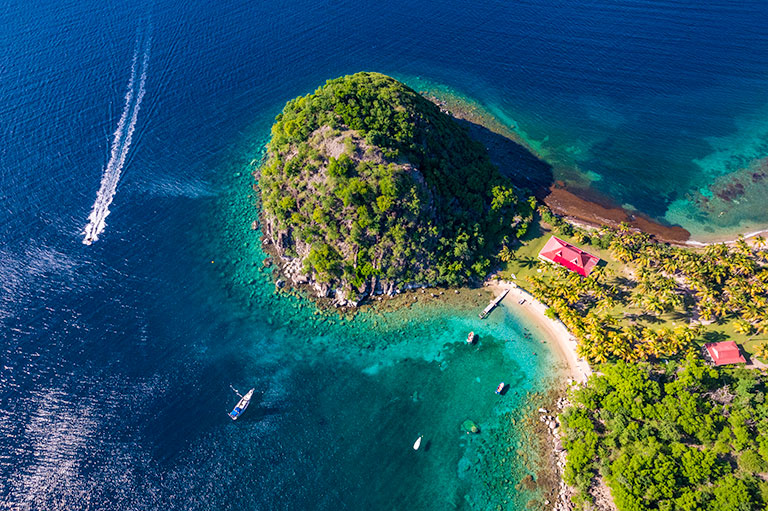
Considered to be one of the most beautiful bays in the world, this small archipelago is made up of Terre-de-Haut, Terre-de-Bas and 7 rocky islets.
Over there, forget about cars, pollution, the world and the stress of big cities… With its small white houses with red roofs, its country church and its fishing port, the village of Terre-de-Haut stretches out all in length. People of fishermen, the Saintois have managed to keep their authenticity and their charm through the centuries.
Les Saintes is also an archipelago that has been marked by history. Christopher Columbus discovered the archipelago in 1493. It is at Fort Napoleon, nestled on the hillside, that you will discover the history of the archipelago and admire one of the most beautiful views of the bay.
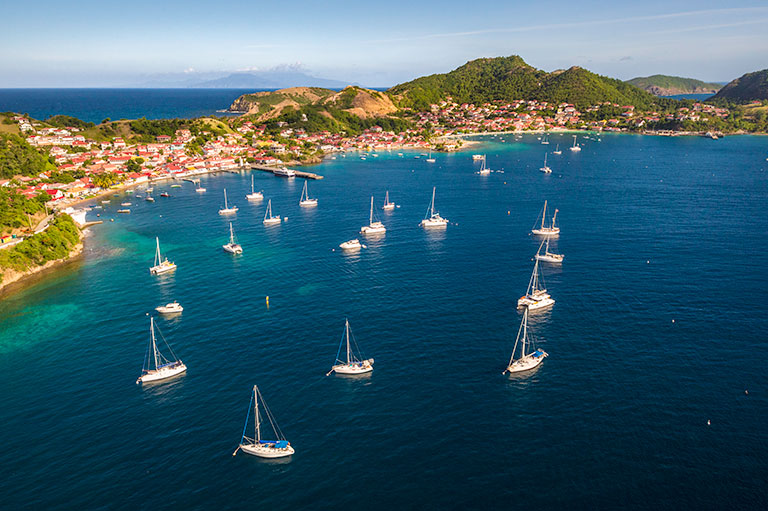
Go now through the streets of Saintes and let yourself be enchanted by the charm of the site. From Pompierre Beach to Anse Rodrigue or from Figuier Beach to Anse Crawen, you will come across paradisiacal places that will make you appreciate the tranquility and change of scenery.
And if you want to extend this parenthesis of happiness away from the sounds of mopeds, Terre-de-Bas remains the wildest island, ideal for hiking enthusiasts.
So don’t wait any longer, and come dream!
(Français) Top 10 des plus belles plages des Îles de Guadeloupe
Top des 5 visites originales incontournables des Îles de Guadeloupe
Si je vous dis « Îles de Guadeloupe » à quoi pensez-vous ? Je mettrais ma main à couper qu’immédiatement vous pensez aux plages paradisiaques des Caraïbes et aux délicieux cocktails que vous rêvez de déguster ! Superbe image me direz-vous, et je ne peux qu’être d’accord, ça fait rêver. Ce qui fait encore plus rêver, c’est tout ce à quoi vous ne pensez pas, toutes les richesses dont vous ignorez l’existence.
Nous vous proposons aujourd’hui de découvrir notre top 5 des visites pour découvrir les îles de Guadeloupe.
- Le parc archéologique des roches gravées

Les îles de Guadeloupe ont une histoire riche et la preuve se trouve dans la région de Trois-Rivières sur Basse-Terre. Le Parc archéologique des Roches Gravées est une rare reconnaissance de la civilisation amérindienne. On y trouve des pierres gravées et plus de 200 dessins d’Indiens Arawak datant de plus de 1500 ans. Petit plus ? Cette petite perle est gérée et guidée par les locaux !
Partez à la découverte de ces roches au sein d’un jardin à la végétation luxuriante où vous pourrez admirer des plantes typiques des Caraïbes ! Amusez-vous à les reconnaître, calebassier, manioc, ricin, cacaoyer ou encore vétiver sont au rendez-vous !
– l’entrée y est gratuite
– Vous pouvez déguster des fruits exotiques, une expérience gustative très ludique pour vos enfants !
-Ce n’st qu’à 9 minutes du Jardin Malanga.
- Le cimetière de Morne-à-l’eau

Morne-à-l’eau est une petite commune de Grande-Terre connue pour son cimetière. Bizarre de visiter un cimetière me direz-vous ? Et bien sachez que la commémoration des morts dans la culture Créole est bien différente de celle en métropole ! A la Toussaint, les familles se réunissent pour passer du temps avec leurs défunts et se remémorer les bons moments et les souvenirs qu’ils ont partagés avec eux, ainsi la tristesse alterne avec la bonne humeur et le bonheur de retrouver sa famille et de partager ses souvenirs.
Ce cimetière est surement l’expression de l’importance de rendre hommage à ses défunts et de maintenir leur souvenir vivant. Ce ne sont pas des tombes en granit ou en marbre qui se dressent devant vous mais bien de véritables maisonnettes ! Certaines familles ont même fait appel à des architectes ! Ces sépulcres sont tous décorés avec soin de carreau en damier noir et blanc. Pourquoi ces damiers ? Personne n’en a vraiment l’explication mais plusieurs hypothèses existent !
Ce cimetière est, depuis 2015, inscrit comme monument historique français au même titre que celui du Père Lachaise à Paris, croyez-mois, il vaut le détour.
- Plongez dans les saveurs de la cuisine créole !
La Guadeloupe est une île gourmande, vous embarquez pour un délicieux voyage culinaire. La gastronomie créole est un cocktail exotique unique au monde. Prenez un peu de cuisine française, un peu de culture africaine, ajoutez une pincée de cuisine chinoise, mélangez le tout avec des saveurs indiennes et HOP, on se régale.
Voici quelques plats qui me semblent incontournables :
- Le Bokit, c’est un sandwich dont la particularité est qu’il est frit ! (Vous pouvez trouver un stand littéralement à tous les coins de rue)
- Les Accras de morue antillais, le nom parle de lui-même, à l’apéro ou en accompagnement c’est toujours délicieux
- Découvrez également d’autres plats traditionnels créoles comme la chiquetaille de morue, la fricassée de lambis ou les homards dombrés, le bébélé et bien d’autres.
- Faire l’ascension du Volcan de la Soufrière

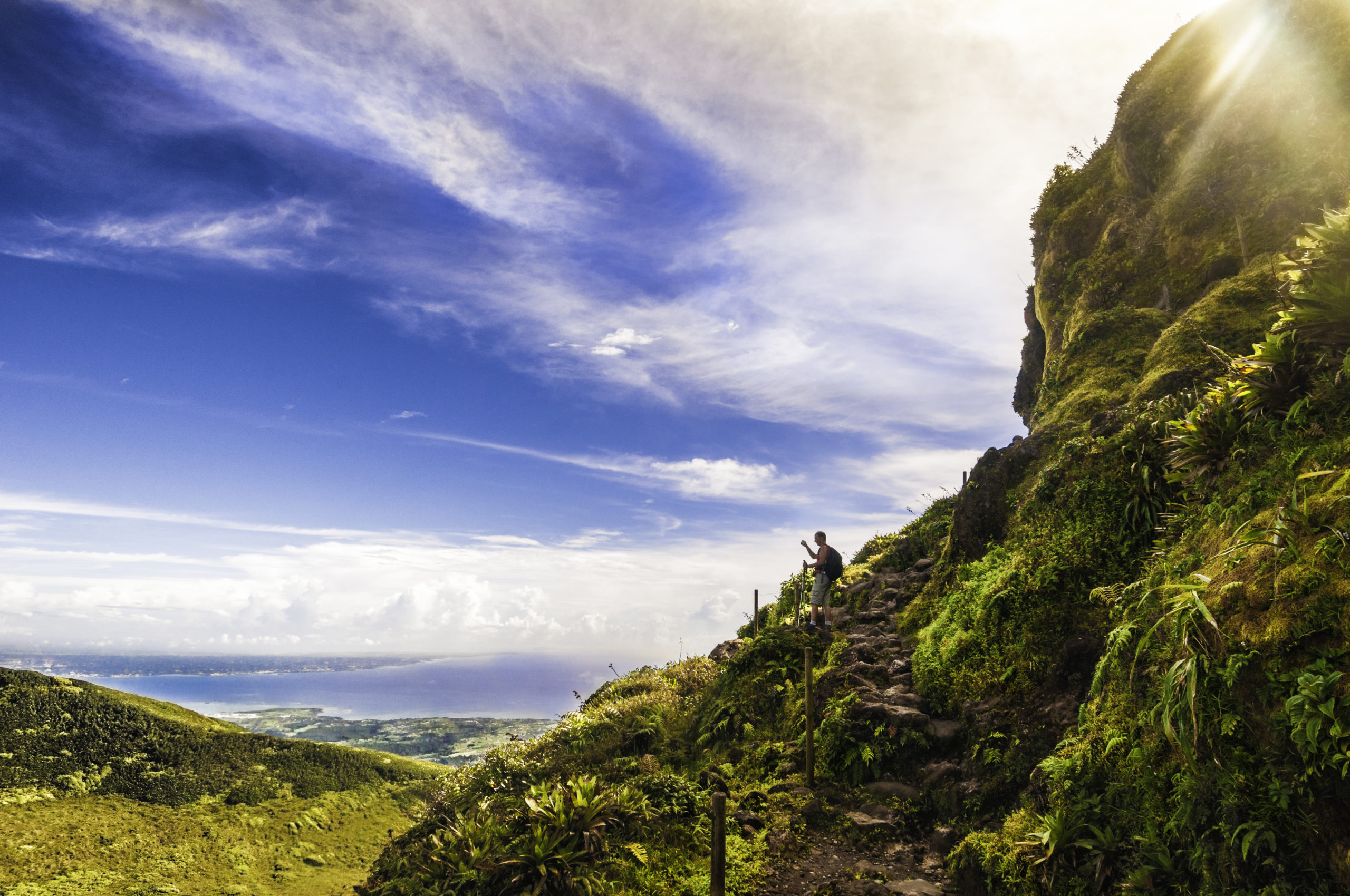
Affectueusement surnommé “vié madanm la”, le volcan de la soufrière est situé sur Basse-Terre et, lorsque le ciel y est dégagé, offre de merveilleux panoramas sur la forêt tropicale et l’océan.
Une balade à faire bien chaussé de ses basquettes pour profiter au maximum de la richesse de ses chemins. Arrêtez vous pour pique niquer (n’oubliez pas de ramasser vos déchets en partant, la nature est plus belle lorsqu’on la respecte), vous baigner dans les bains jaunes ou découvrir quelques unes des nombreuses cascades.
Une fois au sommet, vous serez récompensés de vos efforts par une vue à couper le souffle.
Une chose est sûre, cette balade vous donnera un aperçu des joyaux que renferment les îles de Guadeloupe et vous vous coucherez des étoiles plein les yeux !
- Les activités aquatiques pour du sport et du fun dans vos vacances dans les îles de Guadeloupe !

Qu’on soit amateur d’adrénaline ou pas du tout, la mer offre une multitude d’activités (ou non activité…. 😉 )
Pour les amateurs de Surf, nous vous conseillons vivement le spot de Saint François, la vague y est bien nette et droite dû aux coraux des fonds. Pour les plus expérimentés, ce sera plutôt le spot du Moule, selon la puissance de la houle, la vague peut correspondre à tous les niveaux de surfeurs et vous garanti de passer un très bon moment ! Attention cependant au reef en entrant et en sortant !
Evidemment, tous les sports nautiques sont proposés dans de nombreuses bases nautiques, kayak, paddle pour les plus calmes, kite surf, wind surf, toutes les planches sont praticables !
Pour les moins sportifs et les familles, les îles de Guadeloupe offrent également aux yeux et à la baignade de nombreux lagons ! Saviez-vous que le lagon de Saint-François était classé comme le 6e plus beau lagon du monde par le Petit Futé ?! On note également la beauté du lagon de Saint-Anne bordé par une immense plage. Ses eaux protégées par une barrières de corail sont peu profondes, enfilez votre masque et vos palmes, vous pouvez y observez une multitude de poissons multicolores !
Our recipe for the famous Daiquiri Cocktail, reviewed by our expert in mixiology !
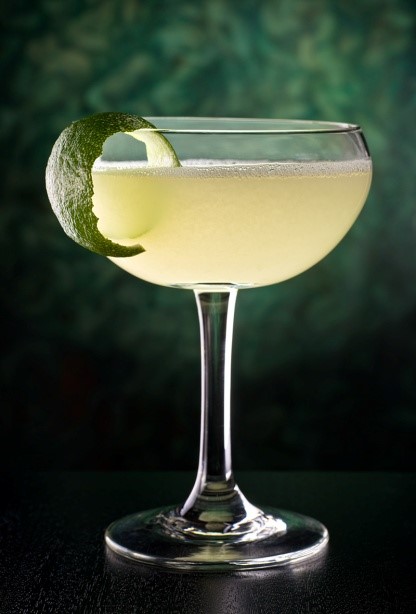
Why not fly to the Caribbean Islands and enjoy this Cuban cocktail, which can be declined according to desires ?
Our Mixology expert will amaze by revisiting the best classic cocktails ! At Le Jardin Malanga, in Guadeloupe, we create cocktails for you in prder to blend flavours. A true journey of original flavors.
Today, our expert unveils his recipe for the famous Daiquiri cocktail.
By the way, several legends are appropiating the creation of this cocktail. The most famous explains that at the beginning of the 20th century, an engineer named Pagliuchi visited an iron mine in Daiquiri, in eastern Cuba. He is received by an American engineer. After the visit, the American would have liked to offer his guest a drink but he had only rum, sugar and lemons in store… ! The Daiquiri would have been born like that.
Did you know ? The Cuban cocktail is so famous that is now has its own day : the 19th of July is officially Word Daiquiri Day !
Don’t wait and take your shaker !
Ingredients :
- 4cl white rum
- 2cl lime juice
- 1cl cane sugar syrup
Preparation :
Fill half a shaker with ice.
Pour all the ingredients into a shaker.
Shake it all and pour it in a Martini glass.
Many variations are possible but our favorite is the Mango version, with mango freshly picked from the garden. The trick to this variation is to add 1.5 cl of mango purée.
Other versions are also delicious, one sweeter and Creole, the other more traditional :
- A Banana version with two banana slices to add. It is better to mix and not to shake to get a smoother texture.
- A Frenchy version with 2cl of orange liqueur and 1.5cl of orange juice to add.
Up to you to choose you favorite version or to find yours to impress your guests…
The advise of our Expert at Le Jardin Malanga : be careful not to test too many versions and to drink responsibly !
DIY : make your own summer body oil
Made to beautify your tan, this recipe made from carrot and argan oil
only takes 3 minutes to make.
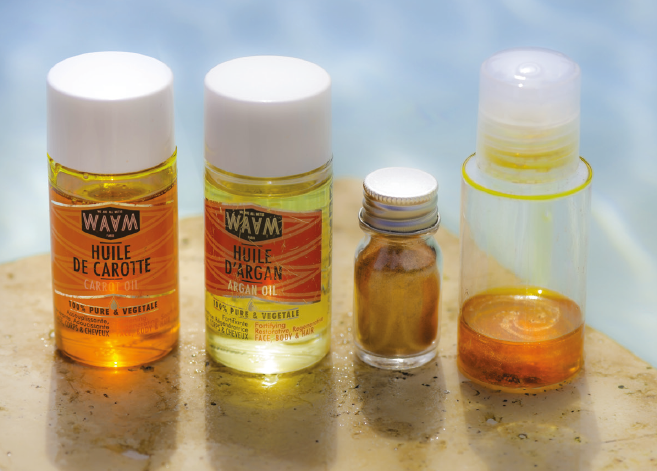
EQUIPMENT
• 1 bowl and 1 whisk for mixing
• 1 empty vial for your scintillating oil
INGRÉDIENTS
• 20 ml of carrot oil. Rich in vitamin 1, carrot
oil softens, regenerates and sooths. It
hydrates the hair while giving it shine and a
natural glow.
• 20 ml of argan oil. Using pure argan
oil twice a day is an essential anti-aging
treatment. It also prevents split ends.
• 1 teaspoon of bronze mica
• Natural mineral pigment to add color to
your cosmetics
RECIPE
Mix the argan oil with the carrot oil. Next add the mica until your mixture is uniform. Pour it into the empty and clean vial. Shelf life: 6 months.
INSTRUCTIONS FOR USE
Shake well before each use and apply to wet skin after the shower. Warm up the product between your hands and then massage into your skin. Store in a cool, dark place, and vial must be air-tight. You can also add an antioxidant like vitamin E.
Why you should use natural products
 Short lists of ingredients that you can actually understand.
Short lists of ingredients that you can actually understand.
Encrypting and understanding the ingredients of your day cream or shampoo requires a certain amount of knowledge… and we don’t all have PhDs in pharmacology. With natural products, everything is simple: no preservatives or dyes. We can get everything we need from the plants themselves.

To treat the skin and hair with respect
Most “standard” cosmetics contain chemical substances that progressively damage the skin after years of use. On the other hand, natural cosmetics are made of 90% natural ingredients. Their effects are known and so there’s
zero risk. They act gently to nourish and clean the skin and hair because they are free of harmful and dangerous products.

A (good) deed for the planet
Think of the future generations! The ingredients used are biodegradable and do not pollute the earth. In addition to the new brands available in the niche market, most wellknown
brands are now trying to limit the use of plastic packaging or offer products in bulk to limit waste.
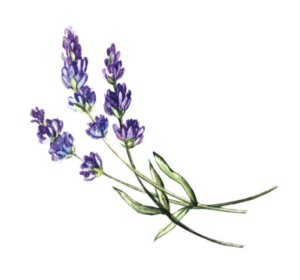
Quality you can feel
The trend to “go green” has also spread to the perfume industry. Natural perfumes are made only of natural ingredients, leaving behind a fragrance that is both light and authentic. They are stripped of synthetic ingredients, and are produced with organic alcohol made from the fermentation of wheat and essential oils.

Widely accessible
Over the years, these products have become more accessible. We can now find them in major stores, drug stores or even in small local businesses. You can even make your own beauty products (On Feb. 13th, will be poublished a DYI for you to make your own oil !)
The 10 essential flavours of Guadeloupe
Creole cuisine is a blend of flavors, spices and recipes of different origins. Our top 10 to try before you leave.
Cod or malanga (vegetarian) acras
Often served with a spicy sauce, these fritters made with fish, usually cod, seafood or root vegetables, are flavored with spices and chilli peppers and can be enjoyed as an aperitif.
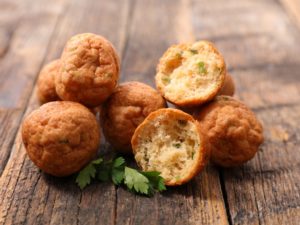
Creole-style black pudding
Made mainly from pig’s blood, bread, West Indian bay and various herbs and spices, this is a very old charcuterie dish. It is traditionally eaten at Christmas.
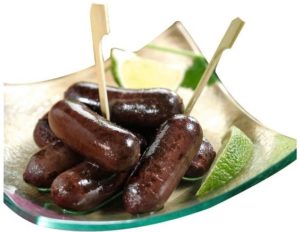
Smoked chicken
For this typical dish, the poultry is first marinaded, then smoked over a sugar cane barbecue. It is served with “dog” sauce (made of onions, chilli peppers, oil and lemon), rice, and yams or sweet potatoes. Mouthwatering!
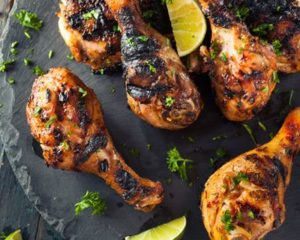
Planteur punch and ti-punch
The sweet and fragrant Planteur punch is a cocktail of fruit juice, cane syrup, Angostura bitters, lemon and white and mature rums. For spirit drinkers, ti-punch is neat rum with cane sugar and lemon. Alcohol can damage your health.

Coconut sorbet
This is a delicate artisanal icecream obtained from fresh coconut flesh which is pressed and flavored with cinnamon, vanilla and lime zest, using an icecream maker equipped with a crank handle. Be sure to try it!
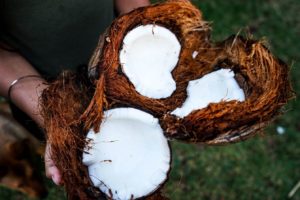
Coconut egg custard
Proposed for dessert in restaurants and on sale in every bakery, this egg custard with coconut is deliciously fresh. It is served with a caramel sauce.
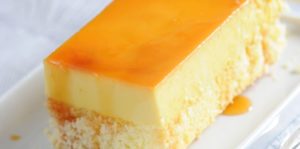
Spices
Star aniseed, cumin, colombo, cinnamon, nutmeg, “vegetarian” chilli pepper, annatto… spices are used to flavor fish, seafood, meat and traditional simmered dishes. Spices make West Indian cuisine a surprising mixture!
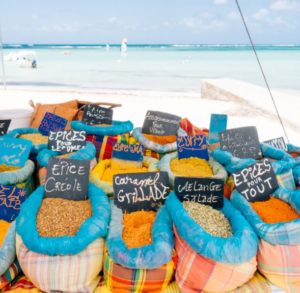
Tropical fruits
The variety of fruit available at the markets makes your mouth water. Our favorites, to be tried depending on the season, are starfruit, banana, mango, maracuja (aka “passion fruit”) and coconut, not forgetting the water lemon and sugar apple.

Street food
If you’re going exploring, try Guadeloupe’s favorite sandwich! The bokit is fried bread roll filled with shredded cod, chicken, ham, cheese, crudités, tuna… whatever you like!
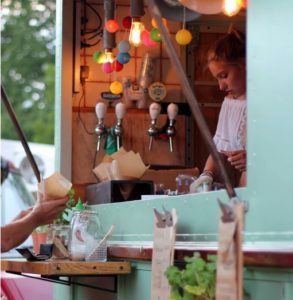
Spicy sauces
“Dog” sauce, Creoline sauce, “enraged” sauce, avocado sauce, smoked-fish sauce, sweet-and-sour sauce… they add flavor to any dish. Learn to use them sparingly, or they’ll bring tears to your eyes!
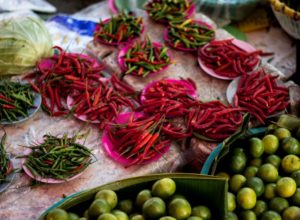
Faustine François
Everything you need to know about banana !
Bananas are good for mental and physical health, and they provide energy… but they also contribute largely to the island’s economy! Focus on a fruit of many virtues.

History
The banana was brought to Martinique by the Portuguese in the 16th century. But it was of little importance in Guadeloupe until the 20th century. In 1928, a cyclone ravaged the coffee and cocoa plantations. That is when the first banana trees were planted, but it was in the sixties that banana production developed significantly.
Distinctive features
The banana “tree” is in fact a giant herbaceous plant. Once plant – ed, the young banana plant takes nine months to reach full fruit-producing maturity. When it does, the banana flower, or “popotte” emerges, followed by a bunch of bananas which will be picked nine weeks later. In the meantime, biodegradable plastic bags are used to protect the bananas from birds and insects. The fruit becomes ripe for consumption three to four weeks after being harvested.
Cooking
Bananas are used in numerous West Indian dishes, such as chicken colombo (plantain) and pâtés, or incorporat – ed into cheese-topped dishes cooked in the oven, made into crisps or Spanish-style fritters, or even blended into cocktails.
Organic cultivation
Nowadays, banana growers are taking care to limit the use of pesticides. More and more, they are committing to organic and sustainable methods. Good to know: banana skins make an excellent fertilizer.
Faustine François






 Book the hotel directly
Enjoy the best guarantees and best offers
Book the hotel directly
Enjoy the best guarantees and best offers
 The best price
The best price No booking fees
No booking fees  Secured payment
Secured payment  An expert at your attention
Need help organizing or booking your stay?
An expert at your attention
Need help organizing or booking your stay?







 An expert at your attention
Need help organizing or booking your stay?
An expert at your attention
Need help organizing or booking your stay?